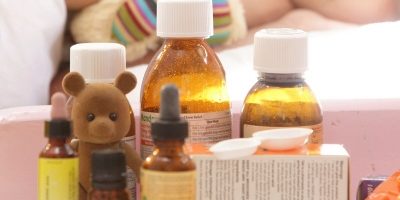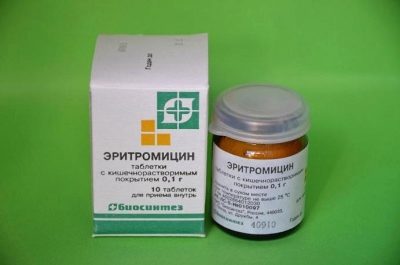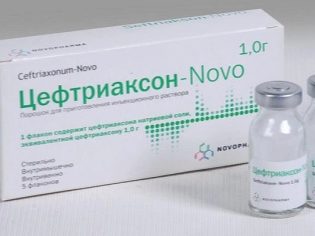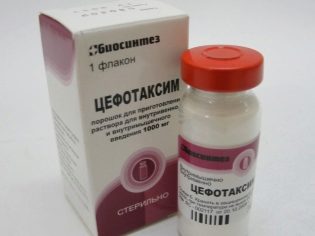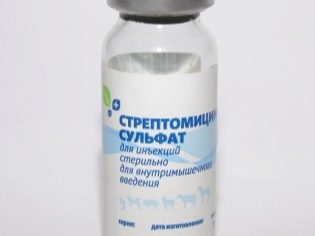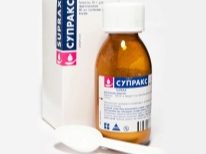Antibiotics for children
No medicine in modern medicine causes so many questions and doubts, so many disputes and polar judgments, like antibiotics. Antimicrobial drugs are sometimes vital and sometimes harmful. Parents often ask in which cases it is possible to begin treating a child with antibiotics, and in which cases it is better to refrain from taking such powerful drugs? Where is the so-called "golden mean"?
What it is?
Antibiotics - vegetable substances, semi-synthetic or synthetic; their main ability is to destroy the pathogenic cells immediately or suppress their ability to reproduce.
The first antibiotic, penicillin, was accidentally obtained in 1928 by Alexander Fleming. But the resulting substance was destroyed so quickly that the scientist could not even convince colleagues of the need for his discovery. Later, in 1938, two Oxford scientists corrected his mistake - Howard Florey and Ernst Chain, who taught penicillin in its pure form and were able to establish its industrial production.
Penicillin saved millions of lives in hospitals of the Second World War. In 1945, Chein and Florey received the Nobel Prize for penicillin.
Kinds
Antimicrobial agents are narrowly targeted (capable of destroying a certain type of bacteria) and broad-spectrum (acting against a large number of known bacteria, atypical pathogens and even some large viruses).
All existing antibiotics can be divided into groups according to differences in chemical composition. It is advisable for parents to learn more about the most popular groups of antimicrobial drugs that can be prescribed to children.
Penicillins
Antibiotics of natural origin or semi-synthesized. They have a relatively mild, sparing action against the body, but are deadly for the cocci of all calibers, including staphylococci, streptococci, almost all gram-positive bacteria, and parts of gram-negative bacteria. Penicillin preparations destroy the bacterial cell wall, thus making its further vital activity impossible.
Doctors usually begin treatment for a child with this group of antibiotics. They are less toxic, and are well suited to children from birth. The doctor may switch attention to other groups of drugs only if the penicillin antimicrobials have not had the desired effect.
Macrolides
These antibacterial substances are considered among the most low-toxic, and therefore they are widely used in pediatrics. The “founding father” of the drug group “Erythromycin” was obtained in 1952 and retains its position in terms of relevance to this day. Representatives of the group "Macrolides" are very effective against chlamydia, mycoplasma, staphylococcus. They are prescribed to children who are allergic to penicillins, and also in case the first group of drugs could not help the little patient.
Cephalosporins
Antibiotics that affect the bacteria that are in the breeding stage.They destroy the cell membrane and release the enzymes that kill the pathogens. Cephalosporins are very effective against many bacteria, it is a strong antibiotic. Children medications belonging to this group are prescribed in case of severe illness. They irritate the mucous membranes, and the risk of occurrence of associated with them dysbiosis, thrush, and stomatitis increases.
Tetracyclines
These are broad-spectrum antibiotics. Destructive for gram-positive and gram-negative bacteria, but completely useless against mold fungi. Tetracyclines inhibit protein synthesis in the cells of the pathogen. Due to its peculiarity, accumulate in the skeleton of the skeleton, tetracycline antibiotics are not recommended for the treatment of children under 8-9 years. They can stain the enamel of the teeth brown. And for children older than 8 years, tetracyclines are prescribed with great care.
Aminoglycosides
Antibiotics that are active against gram-negative aerobic bacteria. These drugs do not interfere with the multiplication of pathogens, as do many other antibacterial agents. They immediately kill the bacteria. Aminoglycosides are highly toxic drugs. They are prescribed for very severe conditions. In children, the use of aminoglycosides can cause serious damage to the central nervous system. Such antibiotics are rarely prescribed and under the close supervision of doctors, in a hospital, for example.
Quinolones
Antibacterial drugs of this group are prescribed to children extremely rarely, since quinolones have a large list of side effects. Some of the drugs in this group may cause deafness or blindness in a child. However, quinolones (in particular, fluoroquinolones) are still prescribed for children, but only for health reasons, and, as a rule, only in the conditions of a hospital.
Antifungal
Antifungal antibiotics, anti-tuberculosis drugs stand out. These drugs are few, and they are prescribed to children of any age by doctors, if required by the health of the baby and his confirmed diagnosis.
Are there any children's drugs?
The concept of "children's antibiotics" as such does not exist. Children on prescription give the same drugs as adults. However, there are dosage forms that are most adapted for children - they Available in the form of suspensions or dry matter for self-preparation at home suspensions. Antimicrobial suspensions can be given to children from birth. They are comfortable, children are eager to drink them, as the manufacturers have taken care of the pleasant smell and taste of the medicine. This is usually a fruity flavor.
For children who are already able to swallow pills, it usually becomes possible between the ages of 5-6 years, they are allowed to use solid forms of drugs. Manufacturers recommend capsules to children from 12 years. Antibiotics that are injected into the body are suitable for children of all ages.
However, parents, talking about "children's antibiotics", often involve drugs that are shown to kids. The instructions for use for each drug specifies the age limit. Do not ignore them.
Besides, antibacterial drugs with a large list of side effects and a list of contraindications are practically not suitable for children.
Many drops (in the ears, nasal, eye), solutions for inhalation, part of ointments and gels containing antibiotics, as well as in candles can be referred to the “children's” forms of medicines. Antibiotic sprays are very popular with moms and dads. They are easy to splash into the throat.
Local antibiotics have an important advantage - they penetrate into the zone of inflammation, without affecting the mucous membranes of the digestive system and intestines. The likelihood of developing dysbiosis is reduced.
They are very widespread in the treatment of certain infectious eye inflammations in children (conjunctivitis, blepharitis, barley), with skin diseases caused by microorganisms, for example, with streptoderma.
What diseases are prescribed for?
Antibiotics for children are not prescribed for viral diseases, since antimicrobial substances cannot cope with viruses. However, they can cause serious harm to children's health if, in the event of a viral infection that “undermines” the child’s immunity, enters the body.
Antibiotics exacerbate the situation by destroying the beneficial microflora. Therefore, antibiotic therapy is not necessary for:
- Flu (all strains).
- SARS (with adenoviral and rotavirus infections, inclusive).
- ARI caused by a virus.
- Other diseases that have become the causative agents of viruses (rubella, herpes, chickenpox, mononucleosis, etc.)
Antibiotics are needed when bacteria, fungi, or atypical pathogens (chlamydia and mycoplasma) have become the cause of the baby’s illness. In addition, antimicrobial agents may be needed for a secondary infection. If a child has bacterial inflammation due to flu or ova, complication.
The doctor will prescribe antibacterial drugs if he finds signs of a bacterial infection. Analyzes can reliably confirm it, but bacteriological laboratories are not in every clinic, and the time for conducting such studies is long - from 10 to 14 days. Usually, the doctor and parents do not have so much waiting time, and the child is prescribed broad-spectrum antibiotics.
I have to say right away that a thinking and competent doctor will hasten to prescribe antibiotics to the baby not at every bacterial infection. If the doctor is sure that the immunity of the crumbs is able to cope with the infection on their own, he will prescribe only symptomatic treatment. After all, antibiotics are not sweet vitamins, and the balance of benefits and harms from taking them is in delicate balance, and sometimes outweighs one side or the other.

Most often, antibiotics for children are prescribed:
- At high temperatures, above 39 degrees, and in children under 1 year old - above 38 degrees. A prerequisite - the heat does not subside for about three days.
- With bronchitis (its bacterial forms).
- With sinus (especially with purulent, as well as with sinusitis with severe disease).
- With adenoids (antibiotics will be needed for bacterial adenoids).
- With otitis (especially often with internal otitis and abundant purulent discharge).
- With tonsillitis.
- With whooping cough.
- With pneumonia (if proven its bacterial nature).
- With meningitis.
- In case of severe intestinal infectioncaused by sticks and bacteria.
- With angina (in its bacterial form, with purulent tonsillitis. Antibiotics are required when scarlet fever), as well as with other ENT diseases (pharyngitis, tracheitis, rhinopharyngitis, etc.)
- With urinary tract infections and kidney diseases (with bacterial cystitis, pyelonephritis, glomerulonephritis, etc.)
- With intestinal infections (not associated with viruses or food poisoning).
- In the postoperative period.
Antibiotics are not used for the prevention of diseases, complications, so there is no point in taking them simultaneously with antiviral drugs. The risk of complications from this will only be higher.
The most popular drugs prescribed for children
Antibiotic name | Affiliation group | Release form | Age restrictions for children |
Penicillins | Capsules Granules for suspension | Since birth | |
Penicillins | Pills Dry matter for suspension Powder for preparation of injection solution | From 0 over | |
Penicillins | Dissolving pills | From 0 and up | |
Penicillins | Pills | Since birth | |
Augmentin | Penicillins | Powders for suspension. | Children from 3 months |
«Ecoclav» | Penicillins | Pills Suspension dry matter | From 0 and up |
"Cefuroxime" | Cephalosporins | Pills Dry matter for solution for injection | From 0 and up |
«Suprax» | Cephalosporins | Capsules Suspension granules | Children from 6 months |
«Sumamed» | Macrolides | Capsules Pills Dry matter for injection Suspension Powder | Children from 6 months |
Cephalosporins | Pills | Children from 3 months | |
Macrolides | Capsules Powder for suspension Pills Powder for injection | Children from 6 months | |
Macrolides | Pills Capsules | Children over 12 years old | |
Macrolides | Pills Capsules | Since birth | |
Macrolides | Pills Suspension granules | Since birth | |
"Unidox Solutab" | Tetracyclines | Dissolving pills | Children over 8 years old |
Cephalosporins | Dry matter for injection | Children from 1 year | |
“Fluimucil-IT” | Combined drug | Dry matter for injection Substance for preparation of solution for inhalation | Children from 2 years |
Treatment rules
Taking antibiotics requires strict adherence to certain rules. Uncontrolled use of antimicrobial agents can cause serious harm to the health of the child.
- Antibiotics must be prescribed by a doctor. Self-prescription and treatment are unacceptable. Since January 2017, they have not been released in Russian pharmacies without prescriptions. This decision was not without reason: over the past few years, the widespread and uncontrolled intake of antibiotics has increased the number of microbial strains that are resistant to drugs. And the pharmaceutical industry does not have time to create new drugs against them.
- It is very important to comply with the prescribed dosage of the drug. Excess dose or reduction can cause an overdose, or vice versa - the lack of the desired therapeutic effect.
- All antibiotics should be taken multiple, i.e. while respecting the time interval between taking the next dose. This is due to the duration of action of a drug. To achieve the effect, the effect on the bacteria must be continuous, therefore, as soon as the effect of the previous portion of the drug ends, the following should be taken.
- Effectiveness is assessed within 72 hours from the time of the first dose. If during this time there is no improvement in the child’s condition, you should inform the doctor. Perhaps the drug is not suitable for the child, then the doctor will prescribe a new drug.
- If during the day after taking the first dose of antibiotic, the baby has an allergy - rash, itching, allergic cough, runny nose appeared, problems with the stool began, you should stop taking the remedy, inform the doctor. He will change the drug.
- With the improvement of the child's well-being, it is impossible to cancel the antibiotics. Positive changes were made possible due to the fact that the drug was able to destroy most of the pathogenic bacteria. But living pathogens will continue to remain in the body. If you cancel the remedy, they will form an addiction and resistance to the antibacterial drug. The next time the doctor will have to prescribe a child a stronger tool with more side effects and more expensive in price. The appointed course, and usually it is from 7 to 14 days, should be carried out to the end.
- The instructions for use of each drug indicate exactly how it should be taken. Some people drink before meals, others - on time, and others - a couple of hours after meals. This is due to the characteristics of the absorption of the substance. Do not be lazy and read the instructions to the end. It is important.
- It is impossible to combine febrifuge with antibiotics. Even at high temperatures.The fact is that fever is another indicator of the effectiveness of antibiotic therapy. If everything is done and chosen correctly, the temperature itself will begin to fall within a day after the start of reception. Antipyretic drugs can distort the treatment pattern.
- While taking antibiotics in the body, the balance of friendly bacteria is disturbed, which also die during antibiotic therapy. This can cause dysbiosis, thrush. At the same time with antimicrobial agents for the prevention of unpleasant consequences, it is desirable to take prebiotics and probiotics that will support the intestinal microflora. The most well-known drugs that conquer dysbacteriosis are Linex, Bifidumbacterin, Bifiform, and others. It is also necessary to take Linex and other similar drugs, following the dosage and recommendations of the doctor, rather than relying on experienced users from the Internet. .
- It will be necessary to review both the diet and the baby’s diet so that the intestinal flora can be restored as soon as possible. When taking antibiotics are not recommended sour juices and fruits, an abundance of fried and fatty foods, which can give additional stress on the liver. During bacterial therapy, the child must be provided with abundant drinking in order to speed up the process of removing toxins from the body. Toxins secrete pathogenic bacteria. It poisons the baby. To drink is not suitable carbonated drinks, milk. It is better to give the child tea, herbal tea, compotes, jelly, ordinary water.
- If there is thrush or stomatitis in the mouth Recommended local treatment with antiseptics with antifungal agents.
- If vomiting has opened or diarrhea after taking the drug, or vice versa, constipation began, the child complains of abdominal pain, he has increased gas formation, all this will require additional treatment. Be sure to report the consequences to the doctor. He will take tests to eliminate other causes of unpleasant symptoms, and prescribe a therapy that will include vitamins, which are very welcome after antibiotics, anti-diarrhea (or laxatives), drugs for the normalization of water-salt balance and medicines that restore the microflora, such as "Atsipol».
The most common questions and complaints related to treatment:
- "A lump remains after the injection." This is either due to the improper administration of the antibiotic intramuscularly to the child, or to the antibiotic itself. There are drugs that you need to prick the child only once a week or even once a month. They have a long and powerful effect, but at the initial stage they really accumulate under the skin, this can explain the very effect of the “bump” after the injection. As a rule, you do not need to do anything with it, it will resolve itself. But if the problem is bothering, you can make an iodine mesh.
- "There are many antibiotics, which one is the best?" The best drug for your child is the one that is right for him for a particular disease. Neither the price nor the reviews of other patients can not navigate. What helped one may not help another. What to drink and whether it is worth to use antibiotics at all, only your doctor knows.
- "There are no children's antibiotics in the syrup in pharmacies." Indeed not. Because in this form they are not issued. Parents often call syrups solutions that can be ingested. For example, they can be obtained if diluted dispersible tablets (“Flemoxin”) in a small amount of water. Do not confuse them with suspensions!
- "The child spits out the pills!" They are usually not tasty, so there is nothing surprising in this behavior. In order not to miss the next intake of the drug, not to persuade the capricious to drink the pill, it is better to immediately start giving him the prescribed antibiotic in suspension. The form is allowed for newborns and infants.
- "A child has a brown tongue after taking antibiotics." This effect happens after taking antibiotics, and after drugs for the treatment of liver and stomach. The strange color of the child's tongue will pass on its own, immediately after the course of treatment is completed.
- "Should I give antibiotics for flux?". Flux is a sure sign of a purulent inflammatory process in the mouth that has begun. Of course, antibiotics can stop it. But to eliminate the cause of this inflammation is unlikely. It is better to send the child to the dentist.
- "How to prepare a suspension?". Granules for the preparation of suspensions or powder for suspensions are most often sold in bottles with a special mark. It is up to it that it is necessary to add chilled boiled water, shake well, and give it to the destination. Shake suspension should be each time before taking, so that at the bottom of the bottle there was no sediment. Store the finished suspension should be in the refrigerator for no more than 15-25 days (for each drug its shelf life).
- "Are there alternative treatments without injections and tablets?" There is. For diseases of the upper respiratory tract, for example, you can get by inhalation with fluimutsilom. And with otitis media, drops with antibiotics will help at an early stage. However, the doctor often recommends such methods of treatment not as basic, but in the form of additional ones to the main course. The safest option is to consult a doctor.
- "Is it advisable to prescribe antibiotics for the child?" Not always. Evgeny Komarovsky, a pediatrician respected by mothers, often talks a lot about this. More than 90% of all illnesses in children, according to the doctor, are caused by viruses. And antibiotics use impractical. They can be harmful and dangerous for the baby. But if your doctor recommends starting antibiotic treatment, listen to it. After all, the remaining 10% of diseases can result in rather sad complications if you do not give the child such a drug in time.
The other extreme - the appointment of such drugs "just in case." Doctors, reinsuring, immediately attributed to antibiotics. This is done to legally protect themselves from possible legal claims on the part of parents. Unfortunately, this practice is ubiquitous, and it leads to the fact that the immunity of children weakens.
Caring and attentive parents do not have to memorize the complex and numerous names of medicines, one thing is enough to understand - antibiotics should not be a first aid. They have many contraindications. Cheap means are not always bad, and expensive ones will not always serve your child in good stead. Experimenting with your own children is a crime against the future. Save for your crumbs the main value, such as health.
In the following video, the popular children's doctor Komarovsky tells in detail about antibiotics, what they are for and when they are used.
Look and transfer to "Live healthy", in which everything is described in detail.


